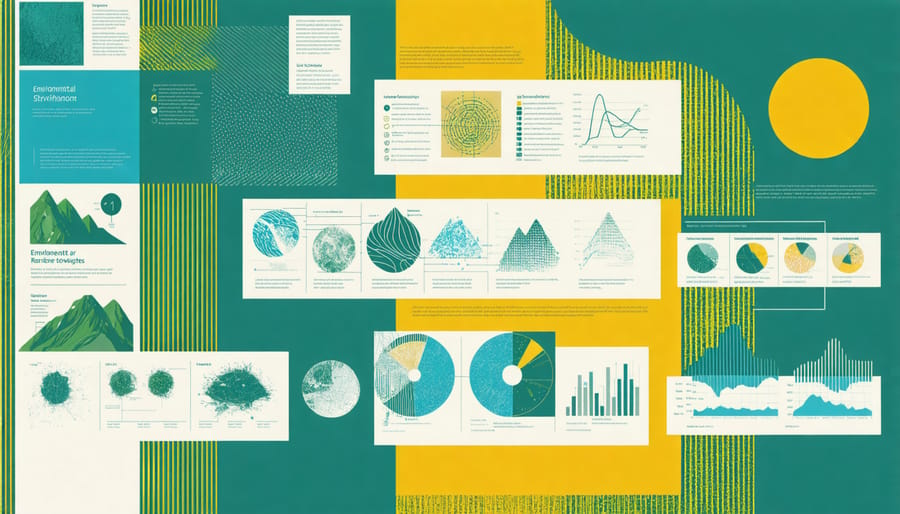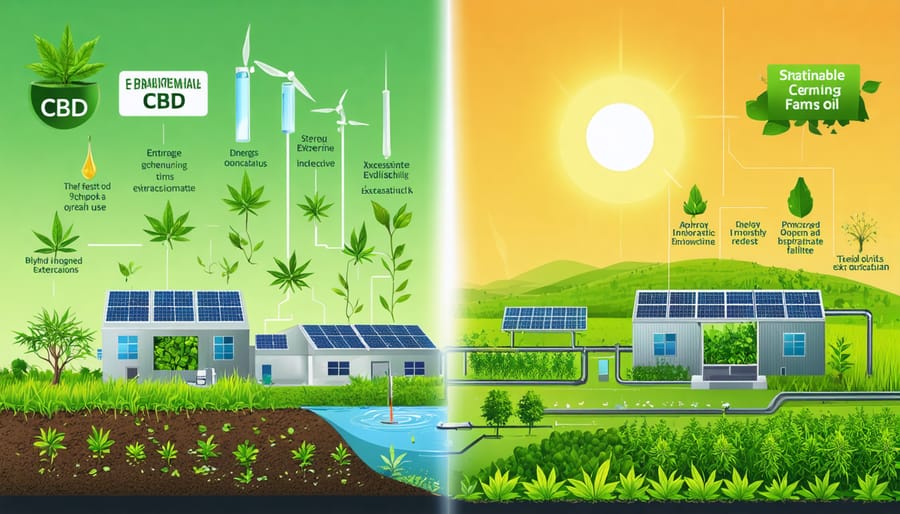Transform environmental advocacy through strategic social media engagement that creates lasting impact without depleting resources or burning out activists. Buy Social Media Signals to amplify your message effectively, but focus on building authentic, sustained momentum through consistent, value-driven content.
Digital advocacy requires a delicate balance between urgency and longevity. Environmental movements succeed when they combine compelling data visualization, storytelling techniques, and community engagement to maintain supporter interest while advancing meaningful policy changes. By implementing systematic content planning, measuring impact through concrete metrics, and fostering genuine connections with followers, organizations can build sustainable digital campaigns that drive real-world environmental action.
The key to lasting social media advocacy lies in creating systems that authentically engage audiences while preserving advocate well-being. This means developing content strategies that align with both environmental goals and available resources, establishing clear boundaries for digital engagement, and building resilient support networks that can maintain momentum through challenges and victories alike.

Building a Sustainable Digital Advocacy Framework
Content Planning for the Long Haul
Sustainable social media advocacy requires thoughtful planning and strategic resource allocation to maintain momentum over time. Start by developing a content calendar that spans at least three months ahead, allowing for flexibility while maintaining consistent messaging. This approach helps prevent last-minute scrambles and ensures your advocacy remains focused and impactful.
Consider implementing a content batching system, where you dedicate specific days to creating multiple posts or materials. This method conserves energy and maintains quality while reducing daily pressure. Aim to build a content buffer of at least two weeks’ worth of posts to accommodate unexpected events or advocacy opportunities.
Resource allocation is equally crucial. Evaluate your available time, budget, and team capacity realistically. Consider using the 70-20-10 rule: dedicate 70% of content to core environmental messages, 20% to engagement and community building, and 10% to timely responses to emerging issues.
Incorporate sustainable practices into your content creation process. Use templates, establish clear guidelines for visual elements, and maintain an organized digital asset library. This systematic approach not only saves time but also ensures consistency in your advocacy message while preventing burnout among team members.
Remember to regularly review and adjust your strategy based on performance metrics and community feedback, ensuring your advocacy efforts remain both effective and sustainable long-term.
Measuring Impact Without Chasing Metrics
When measuring the impact of environmental social media advocacy, it’s crucial to focus on meaningful indicators rather than vanity metrics. While follower counts and likes provide surface-level feedback, sustainable advocacy requires deeper engagement metrics that reflect genuine environmental awareness and action.
Consider tracking metrics that demonstrate real-world impact, such as the number of people participating in environmental initiatives, signatures on petitions, or documented behavior changes within your community. Monitor conversation quality through sentiment analysis and the depth of discussions in comments, rather than just counting interactions.
Establish baseline measurements for environmental awareness in your target audience and track changes over time. Document specific cases where your social media advocacy led to tangible environmental outcomes, such as policy changes or corporate sustainability commitments. These success stories often prove more valuable than numerical metrics alone.
Create a balanced scorecard that includes both quantitative and qualitative indicators. Consider metrics like:
– Content longevity and sustained engagement
– Resource sharing and knowledge transfer
– Community-led initiatives sparked by your advocacy
– Partnership development with environmental organizations
– Policy maker engagement and response
Remember that sustainable impact often develops gradually. Focus on trends over time rather than short-term spikes in engagement, ensuring your metrics align with long-term environmental goals.
Creating Evidence-Based Environmental Content
Data Visualization That Drives Action
Effective data visualization transforms complex environmental information into compelling narratives that inspire action. When presenting climate change data on social media, focus on creating clear, digestible graphics that tell a story your audience can connect with emotionally and intellectually.
Start by identifying your key message and selecting the most relevant data points. Use color psychology strategically – warm colors to highlight urgent issues and cool tones for solutions-focused content. Incorporate interactive elements when possible, such as swipeable before-and-after comparisons of environmental changes or animated graphs showing progression over time.
Consider these proven visualization techniques:
– Infographics breaking down complex statistics into bite-sized insights
– Progress bars showing current status versus environmental goals
– Comparison charts highlighting positive impact of sustainable actions
– Geographic visualizations demonstrating local and global effects
– Timeline graphics illustrating environmental changes
Remember to maintain accessibility by including alt text descriptions and ensuring sufficient color contrast. Keep visualizations simple yet impactful, avoiding cluttered designs that might overwhelm viewers. Include clear calls-to-action that guide viewers toward meaningful engagement with your cause.
Most importantly, pair your visualizations with concise, actionable context that empowers your audience to participate in environmental solutions. This combination of compelling visuals and clear guidance creates a powerful catalyst for sustainable change.

Storytelling with Scientific Integrity
Effective environmental advocacy requires a delicate balance between emotional storytelling and scientific accuracy. While compelling narratives drive engagement and inspire action, maintaining credibility through factual integrity is crucial for mobilizing for environmental change. Success lies in weaving scientific data into relatable stories that resonate with audiences while preserving the truth of environmental challenges.
Consider these key principles when crafting your message: First, start with verified data from reputable sources, then build your narrative around these facts. Use concrete examples and real-world case studies to illustrate environmental impacts. When sharing statistics, provide context that helps audiences grasp their significance. For instance, rather than simply stating plastic pollution figures, relate them to familiar concepts or local impacts.
Visual storytelling can powerfully convey complex environmental data. Infographics, time-lapse footage, and before-and-after comparisons effectively communicate scientific findings while maintaining emotional impact. However, ensure all visuals accurately represent the data they’re based on.
Remember to acknowledge uncertainties in scientific research when relevant, as transparency builds trust. When simplifying complex environmental concepts, maintain the core message’s accuracy while making it accessible to your audience. This approach creates lasting engagement and cultivates an informed community of environmental advocates.
Community Building for Environmental Impact

Fostering Meaningful Discussions
Fostering meaningful discussions on social media requires a delicate balance of engagement and moderation techniques. Start by establishing clear community guidelines that promote respectful dialogue and evidence-based conversations. Frame environmental topics in ways that invite diverse perspectives while maintaining focus on solutions rather than conflicts.
Use thought-provoking questions to spark discussion and encourage participants to share their experiences with environmental challenges and solutions. When presenting data or scientific findings, break down complex information into digestible points that facilitate understanding and invite questions from your audience.
Implement active listening strategies by acknowledging different viewpoints and responding thoughtfully to comments. Address misinformation diplomatically by providing credible sources and encouraging fact-based dialogue. Create dedicated spaces for specific environmental topics, allowing for more focused and productive conversations.
Regularly moderate discussions to maintain a constructive atmosphere while allowing for healthy debate. Use polls, surveys, and interactive content to gather community input and maintain engagement. Remember to highlight success stories and positive developments in environmental initiatives to keep the dialogue solution-oriented and inspiring.
When conflicts arise, guide the conversation back to shared environmental goals and emphasize common ground. This approach helps maintain productive discussions while building a supportive community committed to environmental advocacy.
Converting Online Engagement to Real Action
Transforming online engagement into tangible environmental impact requires a strategic approach that bridges digital advocacy with real-world action. Start by creating clear pathways for followers to participate in environmental justice initiatives through well-defined calls to action. These should outline specific steps, from signing petitions to contacting local representatives.
Leverage social media metrics to identify which environmental issues resonate most with your audience, then develop targeted campaigns that connect online discussions to community environmental actions. Use storytelling techniques to showcase successful transitions from digital engagement to physical impact, inspiring others to follow suit.
Implement a multi-channel approach by coordinating social media campaigns with offline events, workshops, and volunteer opportunities. Create shareable content that includes practical resources, such as downloadable guides for sustainable living or templates for contacting decision-makers.
Track and measure both online engagement and resulting real-world actions through surveys, participant feedback, and impact assessments. Use these insights to refine your approach and demonstrate the tangible outcomes of digital advocacy efforts. Remember to celebrate small victories and maintain regular communication with your community about the collective impact of their actions.
Preventing Advocate Burnout
Setting Boundaries in Digital Advocacy
Setting boundaries in digital advocacy is essential for maintaining both effectiveness and personal well-being. Start by establishing clear time limits for social media engagement, such as dedicating specific hours each day to advocacy work while ensuring adequate offline time for reflection and recharging. Create a content calendar that balances advocacy posts with breaks, preventing information overload for both yourself and your audience.
Implement the “80/20 rule” in your advocacy efforts: spend 80% of your time on high-impact activities and 20% on maintenance tasks. This helps prevent burnout while maximizing your influence. Choose your battles wisely by focusing on issues where you can make the most significant impact rather than responding to every environmental concern that surfaces.
Develop a robust self-care routine that includes regular digital detoxes and mindful engagement practices. Set notifications only for crucial updates and interactions, reducing the constant pull of social media alerts. Create boundaries with your audience by clearly communicating your response times and availability.
Use tools and automation where appropriate to maintain consistency without sacrificing authenticity. Schedule posts in advance during peak engagement times, but remain flexible enough to respond to urgent environmental issues when they arise. Remember that sustainable advocacy is a marathon, not a sprint.
Monitor your emotional well-being by regularly assessing your digital engagement’s impact on your mental health. If you notice signs of fatigue or decreased effectiveness, adjust your boundaries accordingly. Building a support network of fellow advocates can help share the load and provide mutual encouragement during challenging times.
Finally, measure your advocacy’s impact through meaningful metrics rather than vanity numbers, ensuring your efforts align with your long-term environmental goals while maintaining a healthy relationship with digital platforms.
Building Support Networks
Building effective support networks is crucial for sustainable social media advocacy in the environmental sphere. By fostering connections with like-minded organizations, experts, and community leaders, advocates can amplify their message while sharing resources and responsibilities.
Start by identifying potential partners whose values align with your environmental mission. These may include local conservation groups, scientific institutions, educational organizations, and other sustainability advocates. Establish clear communication channels and develop formal collaboration frameworks that outline shared goals, responsibilities, and resource allocation.
Create a collaborative content calendar that allows network members to coordinate messaging and support each other’s campaigns. This approach helps maintain consistent engagement while preventing individual burnout. Consider implementing a rotating schedule where different network members take the lead on specific initiatives or awareness days.
Leverage each partner’s unique strengths and expertise. Some organizations might excel at creating engaging visual content, while others might have strong research capabilities or established community connections. This diversity of skills creates a more robust and sustainable advocacy framework.
Regular virtual meetups and knowledge-sharing sessions can help maintain network momentum and foster innovation. Use these gatherings to discuss successful strategies, address challenges, and plan future collaborative efforts. Document best practices and lessons learned to create a knowledge base that benefits current and future network members.
Remember to maintain transparency with your audience about these partnerships. Authentic collaboration builds credibility and demonstrates the collective strength of the environmental movement. As your network grows, focus on quality relationships rather than quantity, ensuring each partnership adds meaningful value to your advocacy efforts.
Sustainable social media advocacy requires a delicate balance of passion, strategy, and self-care. By implementing the strategies discussed throughout this article, advocates can create lasting impact while maintaining their well-being and message integrity. The key lies in developing systematic approaches that combine authentic storytelling with data-driven content creation, ensuring both effectiveness and longevity in advocacy efforts.
Remember that sustainable advocacy isn’t about constant posting or maintaining presence on every platform. Instead, focus on quality content that resonates with your audience, backed by reliable research and delivered through strategic timing. Build meaningful connections within your community, foster collaborative relationships, and maintain transparency in your messaging.
To ensure long-term success, regularly evaluate your advocacy efforts, adjust strategies based on metrics, and remain adaptable to changing social media landscapes. Prioritize self-care by setting boundaries, taking breaks when needed, and celebrating small victories along the way. Consider implementing content calendars, delegation strategies, and automated tools to manage workload effectively.
As you move forward, remember that sustainable advocacy is a marathon, not a sprint. Your voice matters in the environmental movement, and by maintaining sustainable practices, you can continue making meaningful contributions to environmental causes while inspiring others to join the journey toward a more sustainable future. Start small, stay consistent, and let your authentic passion for environmental change guide your advocacy efforts.




